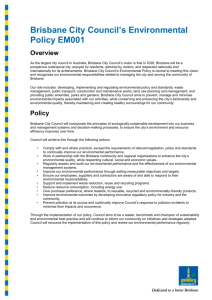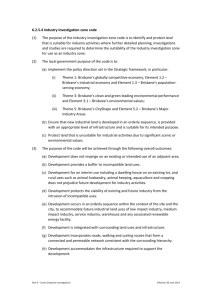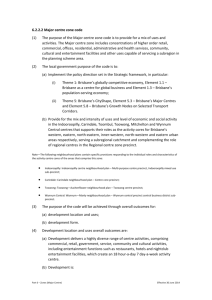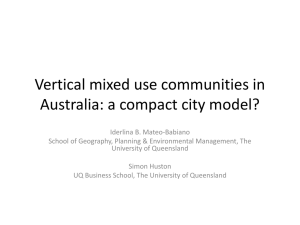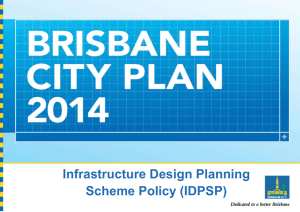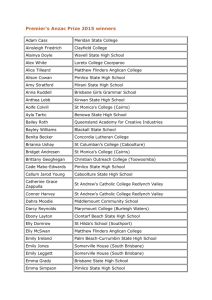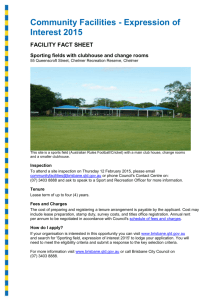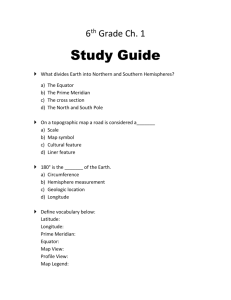Emerging community zone code
advertisement
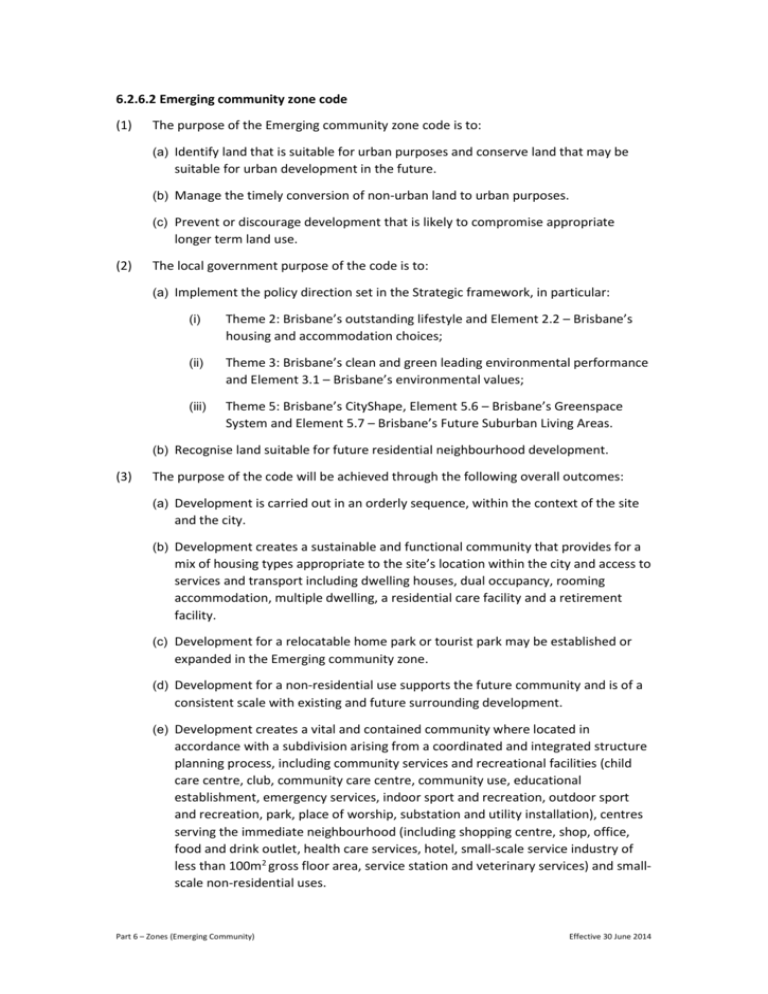
6.2.6.2 Emerging community zone code (1) The purpose of the Emerging community zone code is to: (a) Identify land that is suitable for urban purposes and conserve land that may be suitable for urban development in the future. (b) Manage the timely conversion of non-urban land to urban purposes. (c) Prevent or discourage development that is likely to compromise appropriate longer term land use. (2) The local government purpose of the code is to: (a) Implement the policy direction set in the Strategic framework, in particular: (i) Theme 2: Brisbane’s outstanding lifestyle and Element 2.2 – Brisbane’s housing and accommodation choices; (ii) Theme 3: Brisbane’s clean and green leading environmental performance and Element 3.1 – Brisbane’s environmental values; (iii) Theme 5: Brisbane’s CityShape, Element 5.6 – Brisbane’s Greenspace System and Element 5.7 – Brisbane’s Future Suburban Living Areas. (b) Recognise land suitable for future residential neighbourhood development. (3) The purpose of the code will be achieved through the following overall outcomes: (a) Development is carried out in an orderly sequence, within the context of the site and the city. (b) Development creates a sustainable and functional community that provides for a mix of housing types appropriate to the site’s location within the city and access to services and transport including dwelling houses, dual occupancy, rooming accommodation, multiple dwelling, a residential care facility and a retirement facility. (c) Development for a relocatable home park or tourist park may be established or expanded in the Emerging community zone. (d) Development for a non-residential use supports the future community and is of a consistent scale with existing and future surrounding development. (e) Development creates a vital and contained community where located in accordance with a subdivision arising from a coordinated and integrated structure planning process, including community services and recreational facilities (child care centre, club, community care centre, community use, educational establishment, emergency services, indoor sport and recreation, outdoor sport and recreation, park, place of worship, substation and utility installation), centres serving the immediate neighbourhood (including shopping centre, shop, office, food and drink outlet, health care services, hotel, small-scale service industry of less than 100m2 gross floor area, service station and veterinary services) and smallscale non-residential uses. Part 6 – Zones (Emerging Community) Effective 30 June 2014 (f) Development is compatible with a development constraint and does not adversely affect the character or environmental value of the land (indicated in a neighbourhood plan code or shown on an overlay map). (g) Development is well planned and integrated with surrounding land uses and infrastructure. (h) Development provides a connected and permeable network of roads and walking and cycling routes, which is consistent with the surrounding hierarchy. (i) Development does not impinge on an existing or intended use of an adjacent area. (j) Development provides an adequate buffer area between incompatible land uses. (k) Development for an interim use such as a dwelling house on an existing lot, animal husbandry, animal keeping, aquaculture, cropping or roadside stall does not prejudice future urban development. (l) Development provides the infrastructure required to support the development. Note—A structure plan is to be prepared in accordance with the Structure planning planning scheme policy for development of emerging community zoned land for urban purposes, as outlined in the Subdivision code. Note—Refer to Part 10 for Priority Development Areas assessed under the Economic Development Act 2012. The identification of a Priority Development Area in the Emerging community zone does not have weight for the assessment of development under the Economic Development Act 2012. Part 6 – Zones (Emerging Community) Effective 30 June 2014

